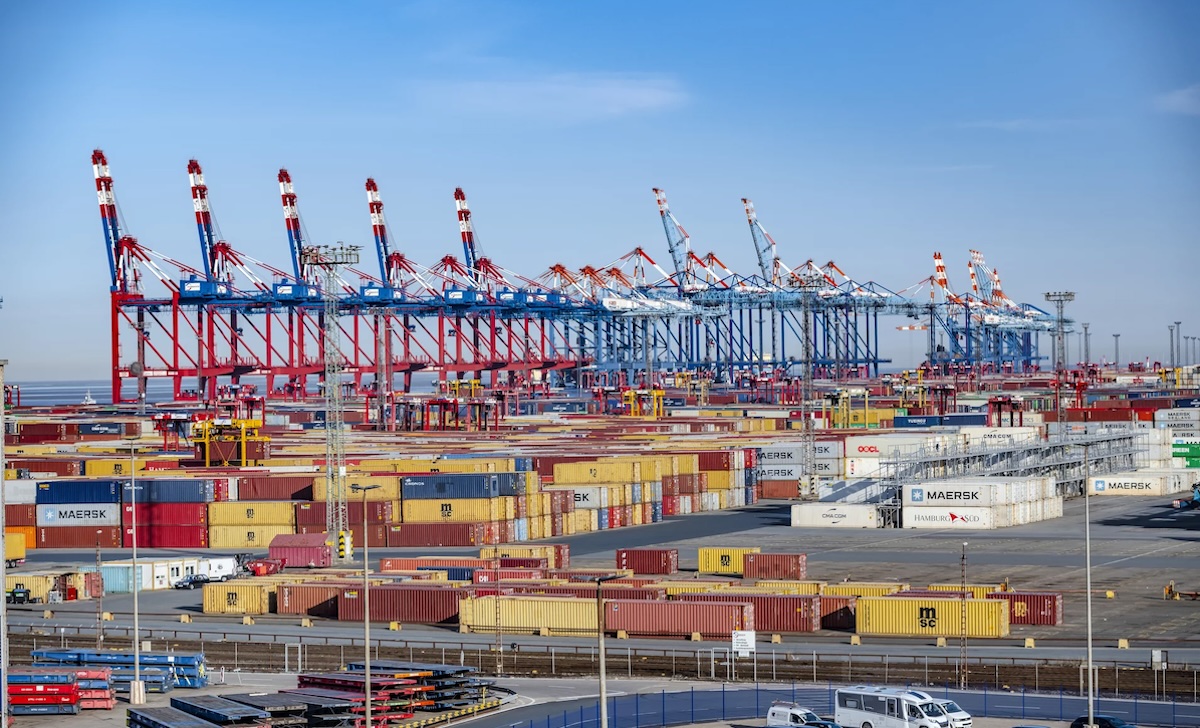Introduction to the EU-US Trade Situation
Recently, a significant framework was announced aiming to calm the churn in transatlantic trade between the European Union and the United States. While this move is not yet a legally binding treaty, it sets the stage for stabilizing shipping dynamics, particularly in sectors exempt from tariffs. But like most stories, there’s a twist: automotive cargo remains a sticking point, with tariffs still casting a shadow on westbound shipments.
How the Trade Truce Affects Container Shipping
The newly outlined trade arrangement attempts to freeze the simmering tensions that have been patchy roadblocks for EU-U.S. container shipments. This primarily benefits goods like pharmaceuticals, industrial equipment, and agricultural produce, which are largely free from fresh tariffs. For forwarders and carriers navigating routes between Northern Europe and U.S. East Coast or Gulf ports, this means a bit more predictability—something like smooth sailing amidst previously choppy waters.
Container Flow Expectations
- Stabilization expected on core lanes for non-tariffed goods
- Improved shipment planning for carriers focused on pharmaceutical, industrial, and agricultural cargo
- Potential bottlenecks remain where tariffs persist
Why Are Automotive Exports Still Facing Headwinds?
Despite the calm elsewhere, automotive exports face an unresolved tariff hurdle—a 27.5% duty on EU vehicle imports remains firmly in place. This tax unevenness acts like a speed bump on what is traditionally one of the highest-value cargo lanes from west to east. A telling sign: a nearly 17% drop in EU car exports to the U.S. during the first half of the current year compared to the previous one.
This contraction isn’t just a headline figure; it has real-world implications for freight volumes and the scheduling ambitions of shipping companies.
The Bigger Picture on Consumer Demand
Tariffs aren’t just numbers; they trickle down to the final price tags on goods that American consumers see on shelves. Higher landed costs on EU products may push consumers toward more budget-friendly alternatives, typically sourced from domestic or Asian manufacturers. This shift could diminish shipping volumes further, especially for consumer-targeted products like food, wine, and mid-range manufactured goods.
Volatility and Future Trade Negotiations
While container volumes overall have edged up by about 2%, shipments specifically from the EU to the U.S. have plateaued, caught between currency fluctuations and tariff impacts. The horizon holds promise, though: broader trade talks encompassing digital regulation, standards, and market access could reshape this landscape dramatically. This evolving situation calls for shipping companies to adopt flexible capacity planning strategies to stay agile amid policy unpredictability.
| Aspekt | Detaljer |
|---|---|
| Tariff Status | 15% on most EU exports to US; 27.5% on autos remain till reciprocal cuts are made |
| Impact on Container Shipping | Stabilized flows for tariff-exempt goods; automotive flows still challenged |
| Westbound Volume Trend | Flat or declined volumes for autos; modest growth elsewhere |
| Future Negotiations Potential | Could include digital and standards regulation, altering trade dynamics |
Logistics Implications for Freight and Carriers
For freight and cargo operations, a stable but limited trade framework means logistics providers must keep their wits about them. Being stuck with fixed tariffs means recalibrating demand projections and optimizing load capacities to avoid costly empty hauls. When shipments—especially those involving bulky or high-value automotive cargo—face tariff resistance, logistics professionals must innovate routes, manage fleet sizes smartly, and anticipate demand volatility.
Personal Experience vs. Reports: A Vital Consideration
While official reviews and feedback from industry insiders provide crucial insights, nothing beats firsthand experience in gauging how these trade developments impact real-world logistics. The fluctuating tariff landscape means companies and shippers should remain vigilant and flexible, leveraging platforms that offer transparency and competitive pricing.
GetTransport.com serves as an example of such a platform, providing global cargo transportation options at competitive rates. Whether moving furniture, vehicles, bulky goods, or managing entire office or home relocations, it offers versatility that’s invaluable in times of trade uncertainty and shifting volumes.
Having access to transparent pricing and a broad choice empowers shippers to navigate the tricky trade environment confidently, avoiding unnecessary expenses or surprises.
Börja planera din nästa leverans och säkra din last med GetTransport.com.
Sammanfattning
In sum, the EU-US trade framework stabilizes much of the transatlantic container traffic, particularly for non-tariffed goods, creating more predictable lanes. However, the unresolved tariffs on automotive exports continue to weigh heavily on high-value westbound cargo volumes, influencing the broader shipping market. This uneven terrain requires carriers and logistics operators to maintain flexible capacity strategies and stay alert to further trade negotiations.
Plattformar som GetTransport.com stand out by simplifying the complexities of international freight, offering reliable and affordable transport solutions worldwide. This helps businesses and individual shippers alike manage the challenges of fluctuating tariffs and shifting demands effectively, ensuring smooth cargo delivery whether it’s a pallet, bulky item, or vehicle.

 Analyzing the New EU-US Trade Framework: Implications for Transatlantic Shipping and Automotive Cargo Flows">
Analyzing the New EU-US Trade Framework: Implications for Transatlantic Shipping and Automotive Cargo Flows">